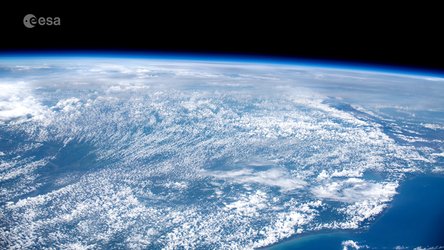Accept all cookies Accept only essential cookies See our Cookie Notice

About ESA
The European Space Agency (ESA) is Europe’s gateway to space. Its mission is to shape the development of Europe’s space capability and ensure that investment in space continues to deliver benefits to the citizens of Europe and the world.
Highlights
ESA - United space in Europe
This is ESA ESA facts Member States & Cooperating States Funding Director General Top management For Member State Delegations European vision European Space Policy ESA & EU Responsibility & Sustainability Annual Report Calendar of meetings Corporate newsEstablishments & sites
ESA Headquarters ESA ESTEC ESA ESOC ESA ESRIN ESA EAC ESA ESAC Europe's Spaceport ESA ESEC ESA ECSAT Brussels Office Washington OfficeWorking with ESA
Business with ESA ESA Commercialisation Gateway Law at ESA Careers Cyber resilience at ESA IT at ESA Newsroom Partnerships Merchandising Licence Education Open Space Innovation Platform Integrity and Reporting Administrative Tribunal Health and SafetyMore about ESA
History ESA Historical Archives Exhibitions Publications Art & Culture ESA Merchandise Kids Diversity ESA Brand Centre ESA ChampionsLatest
Space in Member States
Find out more about space activities in our 23 Member States, and understand how ESA works together with their national agencies, institutions and organisations.
Science & Exploration
Exploring our Solar System and unlocking the secrets of the Universe
Go to topicAstronauts
Missions
Juice Euclid Webb Solar Orbiter BepiColombo Gaia ExoMars Cheops Exoplanet missions More missionsActivities
International Space Station Orion service module Gateway Concordia Caves & Pangaea BenefitsSpace Safety
Protecting life and infrastructure on Earth and in orbit
Go to topicAsteroids
Asteroids and Planetary Defence Asteroid danger explained Flyeye telescope: asteroid detection Hera mission: asteroid deflection Near-Earth Object Coordination CentreSpace junk
About space debris Space debris by the numbers Space Environment Report In space refuelling, refurbishing and removingSafety from space
Clean Space ecodesign Zero Debris Technologies Space for Earth Supporting Sustainable DevelopmentLatest
Applications
Using space to benefit citizens and meet future challenges on Earth
Go to topicObserving the Earth
Observing the Earth Future EO Copernicus Meteorology Space for our climate Satellite missionsCommercialisation
ESA Commercialisation Gateway Open Space Innovation Platform Business Incubation ESA Space SolutionsLatest
Enabling & Support
Making space accessible and developing the technologies for the future
Go to topicBuilding missions
Space Engineering and Technology Test centre Laboratories Concurrent Design Facility Preparing for the future Shaping the Future Discovery and Preparation Advanced Concepts TeamSpace transportation
Space Transportation Ariane Vega Space Rider Future space transportation Boost! Europe's Spaceport Launches from Europe's Spaceport from 2012Latest

Amazon fires seen from Space Station
Thank you for liking
You have already liked this page, you can only like it once!
The Amazon rainforest is burning.
As relief agencies turn to satellite data to help assess the scale, astronauts too are helping to provide context from the International Space Station.
ESA astronaut Luca Parmitano took this image, among a series, from his vantage point 400 km above Earth on 24 August 2019. He tweeted the images, captioning them: “The smoke, visible for thousands of kilometres, of tens of human-caused fires in the Amazon forest.”
The Amazon basin is home to millions of plants and animals and many indigenous people. It also produces a significant amount of the Earth’s oxygen, for which it is sometimes referred to as ‘the lungs of the world’. The Amazon rainforest covers large parts of Brazil, as well as parts of Peru, Bolivia, Paraguay and Argentina, all of which have been affected.
While fires rage in the rainforest, strong winds have carried smoke plumes thousands of kilometres across land and sea, causing a black out in São Paulo, Brazil, some 2500 km away. Data from Copernicus Atmosphere Monitoring System (CAMS) shows that smoke has even travelled as far as the Atlantic coast.
Fires are common during the dry season, which runs from July to October. But this year is unlike any other.
Copernicus Sentinel-3 data has helped to detect almost 4000 fires in August 2019 alone, compared to only 1110 fires in the same period last year.
This year’s unprecedented blazes are four times the normal amount and are likely due to legal and illegal deforestation for agricultural purposes.
Rising global temperatures are also thought to make the region more susceptible to fire.
The fires have sparked an international crisis, with many grappling with what a burning Amazon means for local plant, animal, and indigenous populations, not to mention our planet’s future.
As Luca tweeted, there is no Planet B.
Read more about the fires and how satellites are observing them in this article.
-
CREDIT
ESA/NASA–L. Parmitano -
LICENCE
ESA Standard Licence

Amazon fires

Amazon fires

Amazon fires

Mission Beyond timelapse – Brazil















 Germany
Germany
 Austria
Austria
 Belgium
Belgium
 Denmark
Denmark
 Spain
Spain
 Estonia
Estonia
 Finland
Finland
 France
France
 Greece
Greece
 Hungary
Hungary
 Ireland
Ireland
 Italy
Italy
 Luxembourg
Luxembourg
 Norway
Norway
 The Netherlands
The Netherlands
 Poland
Poland
 Portugal
Portugal
 Czechia
Czechia
 Romania
Romania
 United Kingdom
United Kingdom
 Slovenia
Slovenia
 Sweden
Sweden
 Switzerland
Switzerland
























